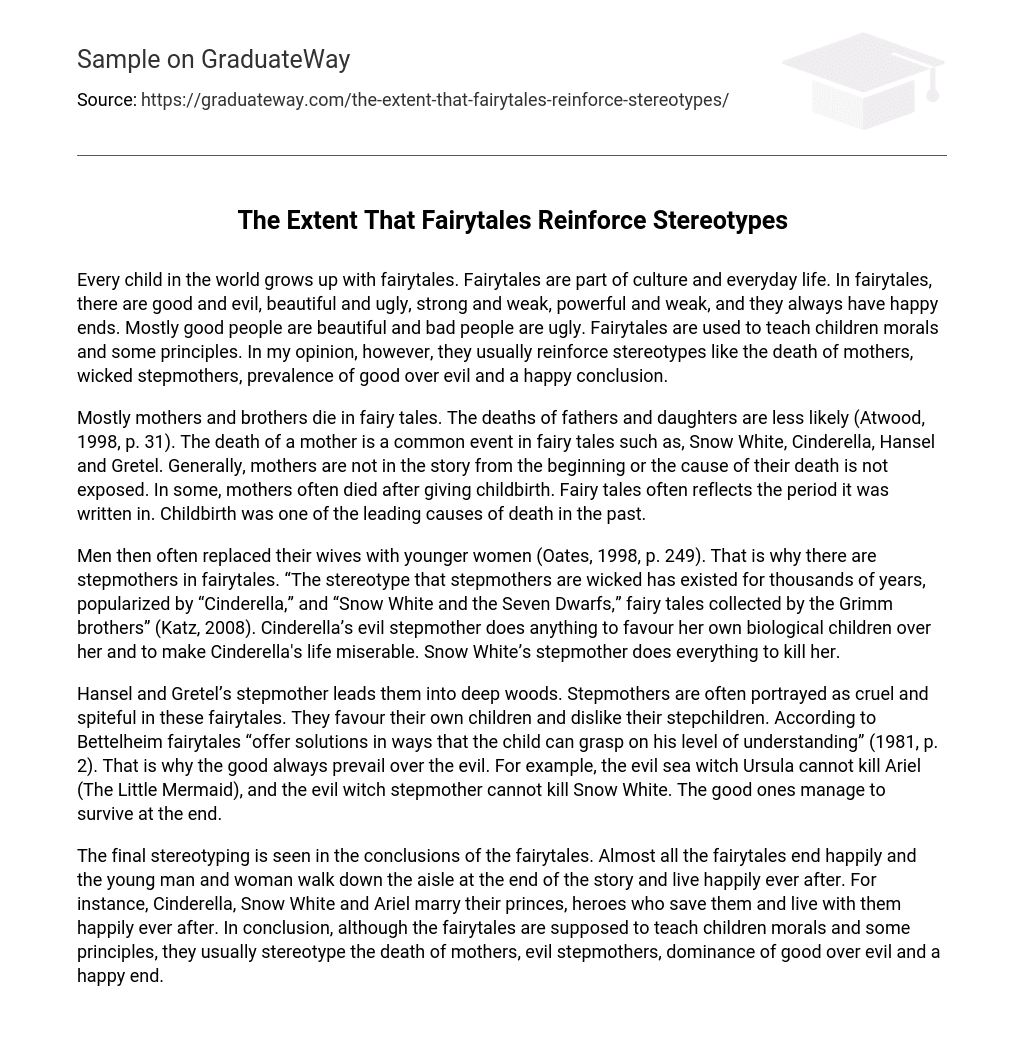Fairytales play a significant role in the culture and everyday life of children around the world, effectively portraying contrasting concepts such as good versus evil, beauty versus ugliness, strength versus weakness, and power versus vulnerability. Ultimately, these narratives typically culminate in a happy ending. The protagonists are commonly depicted as appealing characters, while the antagonists usually possess unattractive qualities. Additionally, fairytales have historically been used to instill moral values and principles within children. However, in my opinion, they often reinforce stereotypes like the absence of mothers or presence of wicked stepmothers, the triumph of good over evil, and the achievement of a joyful resolution.
According to Atwood (1998, p. 31), fairy tales frequently depict a greater chance of mothers and brothers dying, while fathers and daughters have a lower likelihood of death. The demise of a mother is a prevalent theme in fairy tales such as Snow White, Cinderella, and Hansel and Gretel. In these narratives, mothers are either missing from the start or the cause of their demise remains undisclosed. Certain mothers perish after giving birth. Fairy tales often mirror the era they were written in, and childbirth was a notable source of mortality in earlier times.
Throughout history, men have often replaced their wives with younger women, as stated by Oates (1998, p. 249). This practice has resulted in the presence of stepmothers in fairy tales. The Grimm brothers (Katz, 2008) document how the depiction of stepmothers as wicked characters has been popularized for thousands of years through stories like “Cinderella” and “Snow White and the Seven Dwarfs.” In these tales, Cinderella’s malevolent stepmother shows favoritism towards her own children and makes Cinderella’s life unbearable. Similarly, Snow White’s stepmother plots to kill her.
Hansel and Gretel’s stepmother guides them into a dense forest, as commonly portrayed in these fairytales. Stepmothers in these stories are often depicted as unkind and malicious, displaying favoritism towards their own children while disliking their stepchildren. According to Bettelheim (1981, p. 2), fairytales provide solutions that children can comprehend at their level of understanding, which is why good always triumphs over evil. For instance, the malevolent sea witch Ursula fails to kill Ariel from “The Little Mermaid,” just like the evil witch stepmother is unable to murder Snow White. Ultimately, the virtuous characters manage to survive.
The fairytales often stereotype various aspects. One example is how they tend to conclude with a happy ending, where the young man and woman get married and live happily ever after. Characters like Cinderella, Snow White, and Ariel, for instance, marry their princes who saved them. In summary, while fairytales aim to teach morals and principles to children, they often reinforce stereotypes such as the demise of mothers, the presence of evil stepmothers, the triumph of good over evil, and a joyful conclusion.





